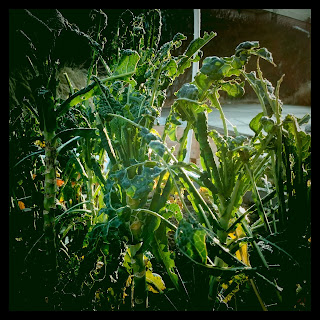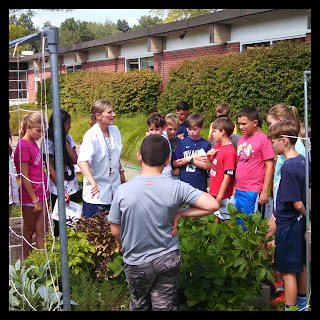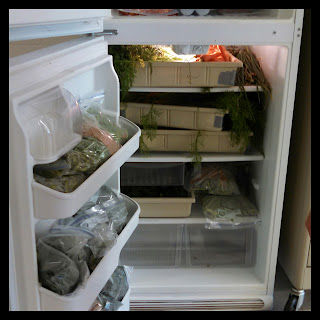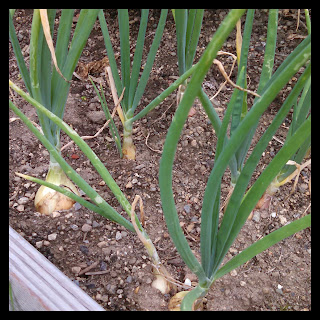Thursday, December 10, 2015
Wednesday, November 25, 2015
Putting The Gardens To Bed
The season cycle has turned again and it is time to put the gardens to bed for the winter.
Happy Thanksgiving to you all. May it be warm and filled with joy.
Monday, November 9, 2015
Saturday, October 24, 2015
Friday, October 16, 2015
Thursday, October 15, 2015
Not all of fall is shades of amber...
Late plantings at the Farm School are coming in with the turning of the season cycle.
The hope here is to maintain these colder season crops through the winter and into the spring.
For the first time in my experience we have been needing to catch and release actual locusts.Arugula and other lettuces are enjoying these warm days and cooler nights, but the killing frosts are coming soon. Row covers and frost fabric will help extend their growing season through October.
Snow peas are doing well now too.
I guess you can call this scatter planting.
Despite these warm days winter is definitely on the way and it will soon be time to browse through seed catalogs and begin planning the gardens for the nest growing season. Though I have not seen a wooly bear caterpillar yet this season (the wider the black band the more harsh the winter, so say the Olde Tymers), but the oak trees are dropping acorns in huge numbers. Some Olde Tymers say that is another sign of a harsh winter to come, but others say it is really a reaction to the previous winter. Either way, it would be excellent to find a way to process or cook all those acorns for storage, or feed them all to some pigs. Just watch out for the weevil larvae. Blech.
Friday, September 18, 2015
Did we mention...
...that sometimes things on the farm break? Somebody was a little too excited yesterday about shoveling and moving soil to the new cold frames that they lost track of their feet and so this happened. No problem though. One quick trip to the hardware store and it was solid once again.
Most of the time though things grow or get built, like these two new cold frame boxes. Between the four of them there will be six small plots for the second and third quarter kids to work with.
Thursday, September 17, 2015
It's Been A While...
...but things at the Farm School are looking really good. We are in the third week of school and I am not sure we could have hoped for a better introduction to the garden for our new sixth graders. They are totally excited about it and according to Heather they are practically begging to go out to the gardens every time they are in class. She has had them out there picking weeds, hunting bugs, doing general maintenance and harvesting the bounty.
And speaking of the bounty, here it is...
As we head into fall, and the sunlight sinks in its declination, our harvest continues.
Also, as the winter approaches, we are continuing to work towards a four season harvest by turning old window frames (recycled from Heather's home project) into boxes we can use to grow some cold hardy plants such as mache lettuce and carrots. We will be building two more this afternoon.
And sometimes on the farm things break. This is the ripcord and housing to an Echo weed cutter that we were using. Here we have a key element to the idea of sustainability. It could have been a >$300 addition to the local dumpster, but with some time spent with youtube tutorials and some investigation into where to order parts, $45 and three days later we are good to go.
If you are in the neighborhood please check us out.
Thursday, August 13, 2015
Pickling Day
Today we made our first batch of pickles from the cucumbers grown here at the farm school. It is a fairly simple process that requires a few special pieces of equipment and a couple hours, but the end product is totally worth it. The endless variety of flavorings is also a fun part of the process.
We are using vinegar, salt, and spices to create an atmosphere that will hinder the growth of certain bacteria. Pickles, tomatoes, and chutneys are examples of food preserved in this way. Sugar can also be used this way to preserve jams and jellies.
The canning method we are using here is the boiling hot water bath. Once the water returns to a boil with the full jars in the pot the timer is set to fifteen minutes. In this time at 212 degrees most of any bacteria present will be killed off, and the jars will have expelled much of the air that was inside. The acidic environment will take care of the rest. When they cool the lids will give a distinctive "ping!" sound and you can see that they have created a vacuum seal. Stored in a reasonably cool place these jars will store indefinitely, if they are not eaten right away. They usually need a week or two to absorb all the flavors and then a week in the fridge will add to their crisp and crunch. The other method of canning uses produce that is not acidic, or is not desired to be acidic. This process uses a pressure canner because the temperature needs to be much higher than boiling in order to take care of the bacteria that might be present.
Subscribe to:
Comments (Atom)































































